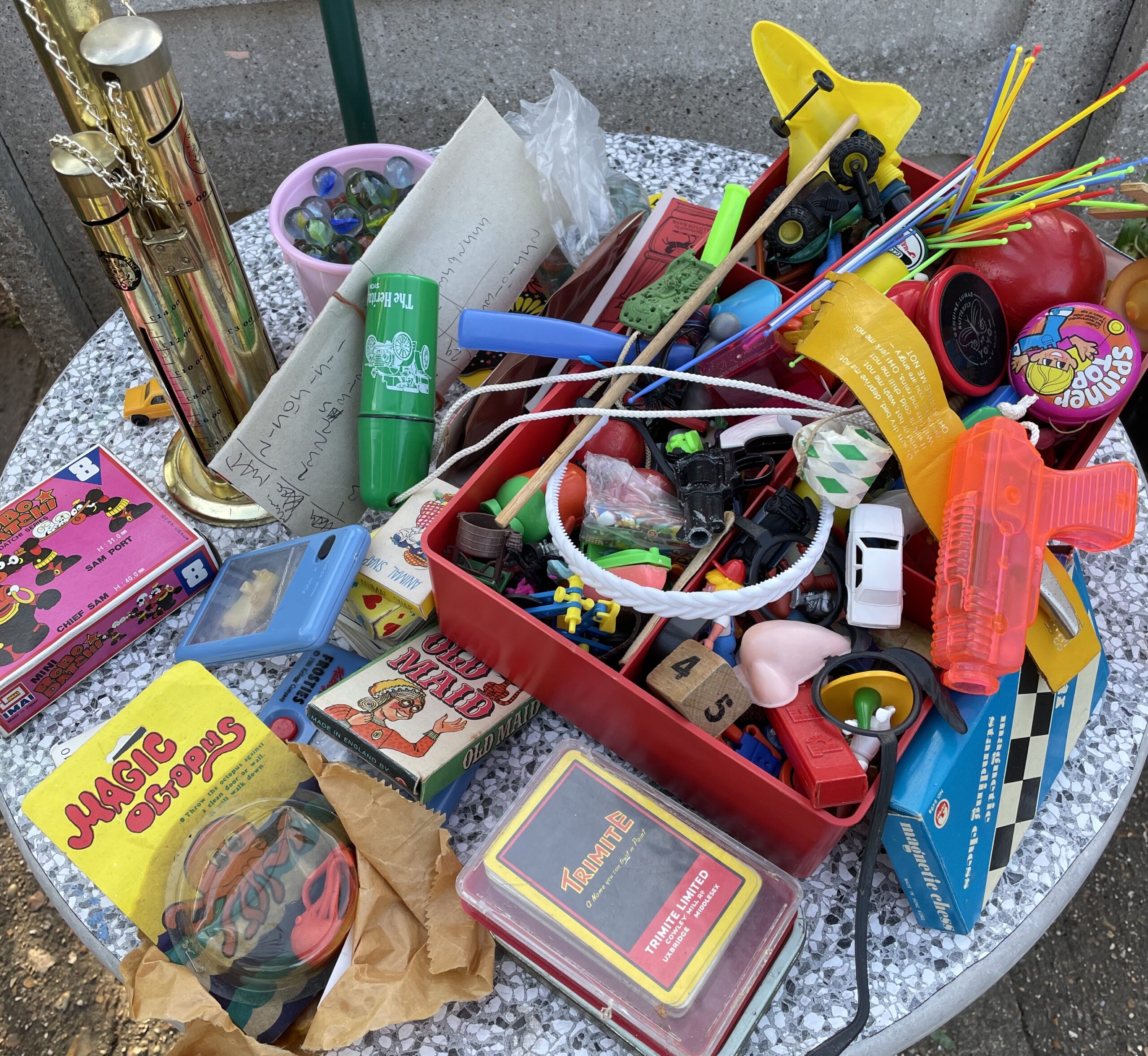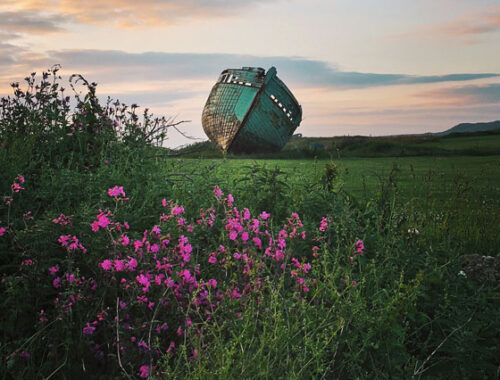Tarquinius W. Peterson’s Fantastical Guide to: The Last Supper by Leonardo da Vinci
Welcome, once again, to Tarquinius W. Peterson’s Fantastical Guide to the World of Art.
This week we are uncovering …

One of the most amazing frescoes ever, clings to the wall of Milan’s Church and Convent of Santa Maria delle Grazie. The original monastery, built for Dominican Monks over six-hundred years ago, includes a large refectory for dining. Leonardo Da Vinci, a successful street artist of the time, broke in to the monastery, just after its completion, and daubed graffiti into the fresh plaster to one end of the monk’s dining room.
Monks attending a late night prayer session dedicated to patron Saint Augustine of Hippo caught Leonardo multi-coloured handed. The penance given to Da Vinci included painting a food themed mural over his “Leonardo era qui!” tag.
Such it is, The Last Supper is old. We can see thus in the aged quality of the plaster, but this is not strictly a true account. Put simply, in creating the original artwork, Leon–as I prefer to call him–blended the composition through clouds of smoke and cheap stucco.
To establish a painting of such realism, Leon, according to an entry in his diary, created a live smokey ‘tabernacle’ atmosphere. The last supper took place around the Easter holiday and as we know it can be cold that time of year. Two other facts to note: open fires were fashionable in this period, fresh wood has tendency to smoke. With the dry wood burnt during the winter, damp wood produced thick smoke and drew several of the disciples to complain about the smokey stench of their togas during the sitting.
The green wood became a problem as painting proceeded, the more wood burnt, the greener the stockpile became, the smokier the atmosphere.
Being well known in science and technology circles, Da Vinci was a skilled inventor and creator of wizard-like creative inventions; the helicopter for example. Sketches of Leon’s copter are found all over the web, what isn’t realised is why it exists.
With the smoke getting out of control, hams and cheeses underwent a second process of smoking in the refectory. De Vinci required an extractor fan. One afternoon, following a particularly smokey session, the artist, painter, inventor, scientist, God-fearing man, disappeared into a local olive grove, only to reappear with his whirly “aerial screw” fan, which he paid a servant to fly around the dining room to keep the smoke away from the disciples.
Before we look in further detail, can I just confirm that the arched shape to the centre beneath the table is a stone arch to a store at the back of the refectory. It is not the top of the painter’s chair, as those less-educated have maintained.
Critic Jean-Luc Cliffman once incorrectly stated that the painter, Leon obv’s, included the back of his own chair, because when he took a pinhole camera picture for reference and stood behind it to get the whole table in the picture, he forgot to move his chair. Naturally, Jesus wasn’t too pleased because the chair masked his feet, and he took a pedicure especially for the painting.
Painting alfresco on a wall is never an easy task, however, this was an inside fresco, but just as hard. Imagine painting a monster picture in a refectory with bench seating and long tables in the way, not to mention tempting food aromas.
With these complexities considered, it is no surprise Leon d’Vee–as I now prefer to call him–misjudged the composition height. As a result the tablecloth draped lower than the apex of the door archway. A sketch, added to the indented archway panel, portrayed Jesus’s feet and ankles, but the appendages appeared too distorted from the best seats in the feasting congregation, and later omitted. Jesus mouthed obscenities, following the absence of his freshly pedicured tootsies. Mary of Bethany, pissed-off too, hurled abuse as she’d spent that morning polishing Jesus’s nails with expensive nard.
The archway is still in existence, but the doorway remains blocked-up, under order of a past abbot following one Christmas (see below for more fantastical art guidance). The door lead to a cellar where a small sect of silent monks attended to brewing the monastery’s own brand grappa. It is believed distilling equipment sits gathering dust in the sealed chamber.
The importance of alcohol to the celibate monks, lead to the survival of Leonardo’s masterpiece. In protecting the house Grappa, the cellar and wall above were reinforced to deter looters. Chemical fumes from the distilling process permeated the low-grade plaster too, forming a protective layer. In August 1943, an Anglo-American bomb landed on the Refectory destroying all but the rear frescoed distillery entrance wall.
A UNESCO World Heritage site, monastery church and convent of Santa Maria delle Grazie, owned by Roman Catholic monks. One Christmas Day, several centuries ago, these same monks, became embroiled in an almighty food fight. Consequence of said food fight resulted in the deformation of The Last Supper, engraining gravy, cranberry sauce, and brandy butter into the fresco; adding to its misty quality. Needless to state the abbot was unpleased and put a stop to Christmas dinners in the Refectory. All religious dining celebration now takes place in Carluccios, in Milan’s City centre.
Returning to the world famous wall painting we note Jesus in the centre of the table with six of his disciples to either side. These sixes, split into groups of three. Not the usual row of thirteen forward-facing diners. Earlier painters assembled the disciples regimentally, Leon d’Vee chose a new way to represent the well-known supper and broke a relaxed real life rendition of restaurant dining with drama.
Leftover bread and crackers from the cheese board scatter the table as the gathering awaits coffee (thick Arabian type, not your oat-milk latte). Many believe, as Leon intimated to the Dominicans, that the Last Supper painting depicts the moment after Jesus told his disciples one of them would betray him. In reality, the scene shows the mayhem following Jesus announcing that he’d already paid the bill with his Amex, on the quiet, when he last went to the loo.
The disciples, annoyed that once again their messiah had beaten them to it, just because daddy is all-seeing and gave his son the nod when it’s the best time to pay unseen. A furious St Peter is shouting in the ear of St John, above the noise of the ruckus, and pushing Judas Iscariot aside. It had long been noted that Judas was a skinflint and never put his hand in his pocket for anybody. Whilst his fellow apostles are arguing over Jesus’s generosity the stingy Iscariot performs a sleight of fingers grab at the Tyrian silver shekels on the tipping plate. The nonchalant Judas catches the eye of Jesus which influences the prophet’s later speech to the twelve men.
“… the one who has dipped his hand into the tips bowl with me will betray me …”
Other points to note in the painting is Da Vinci’s skills of perspective. Blacked out windows to both side walls and intricate checkered ceiling are in perfect alignment with the vanishing point of the refectory when seated at the head of the centre table, a place reserved for the abbot. On my last visit, whilst enjoying a rather splendid ciborium of cracker breads and cheese, I observed these pleasing lines and angles. Sadly, I’ve no selfie of this, as photography is forbidden in the convent’s refectory (even for Tarquinius W. Peterson), so you’ll have to take my word for it.
Leonardo was also a stickler for health and safety detail; seen by the inclusion of the white alarm box featured to the left of the rear fire door. This door often remained open, propped by several empty wine pitchers, to clear the atmospheric green wood smoke.
You May Also Like

Another Update!
October 6, 2021
Wings
November 25, 2015